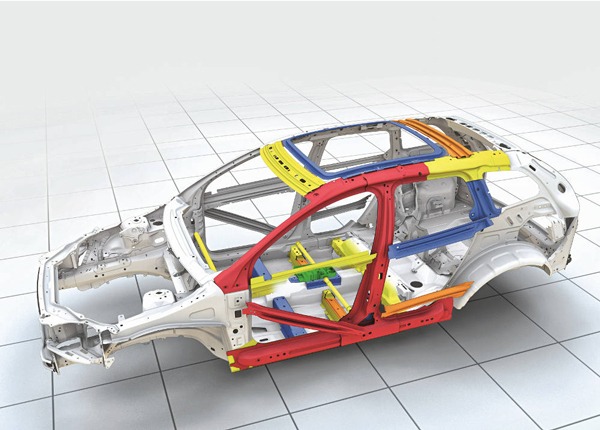
The Correct Sitting Position for Safe Driving - Make It A Habit
Updated Dec. 25, 2020The importance of sitting correctly while driving cannot be overstated. Maintaining a proper sitting position will afford you maximum control over the vehicle and will minimize the chance of being injured or killed during a collision. Modern vehicles are engineered with sophisticated safety features, which are designed to be effective in collision scenarios where the driver is sat up straight, positioned high enough to see over the steering wheel, and is squarely in front of it. If you do not maintain this position while driving, your vehicle’s safety features may not be able to protect you.
Seat height
While sat back in the driver’s seat, your shoulders should never be more than one inch lower than the top of the steering wheel. Sitting too low in relation to the steering wheel will restrict your view of the road and increase the risk of sustaining fatal head injuries during a collision.
Most vehicles have height-adjustable seats and/or adjustable steering columns to help you position yourself at the right height relative to the steering wheel. If your vehicle does not have either of these features and the wheel is more than one inch higher than the top of your shoulders, you may need to sit on a wedge-shaped driver’s cushion to achieve a safe position.
Distance from the steering wheel
Sitting too close to the steering wheel will increase your risk of injury should the airbag deploy during a crash. Being too far away can also be dangerous, as it may hinder your ability to steer effectively and control the vehicle. To position yourself at the correct distance from the steering wheel, sit back in the driver’s seat and extend your arm straight forward, toward the wheel. You should then adjust the wheel or seat position until your wrist is lined-up with the top of the steering wheel.
Adjusting the driver’s seat
Never attempt to adjust the driver’s seat height or distance from the pedals while actively driving the vehicle. Most modern vehicles are designed with electronic controls to make it easy for drivers to alter their seat position. Older vehicles tend to have manual levers that are fixed to the front or side of the seat itself.
However your car’s seat adjustment controls work, always make sure you are safely stopped before making any changes. While the vehicle is in motion, you must be fully focused on scanning for hazards and controlling the car. You will not be able to do this effectively if you are also messing with the position of your seat. Plus, you run the risk of inadvertently moving too far away from the pedals and losing control of the vehicle.
Adjusting the headrests
When correctly positioned, the driver’s seat headrest will support your head in the event of a rear-end collision. Whiplash neck injuries are common in rear-end collisions, as the vehicle occupants’ heads are thrown backward with considerable force when the car is struck from behind. Having your headrest at the correct height will minimize the chances of such injuries occurring.
The front surface of the headrest must be in contact with the back of your head in order to support it correctly; your headrest is too low if it only connects with the base of your skull. For ideal positioning, aim to set the top of the headrest at roughly the same height as your ears.
Make proper positioning a habit
It’s all too easy to get lazy with your sitting position as you gain more experience as a driver. Remember that you are always at risk of being injured if you are not sat correctly, whether you have been driving for ten minutes or ten years. As you learn to drive, take a moment to check your position every time you get into the car. This will help you to form solid safety habits that will continue to protect you for years to come.




